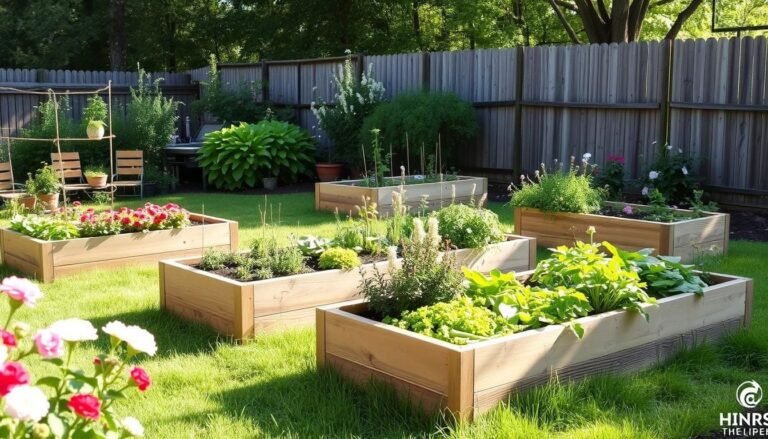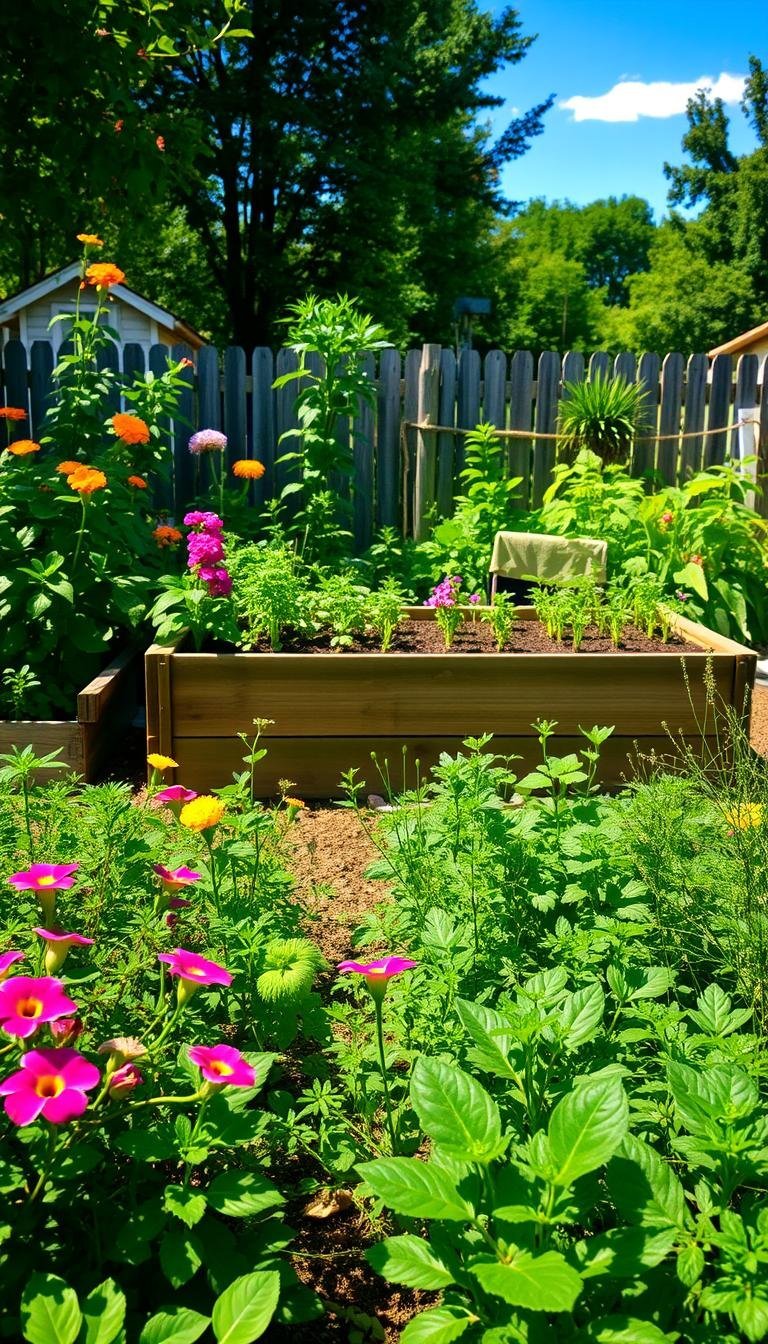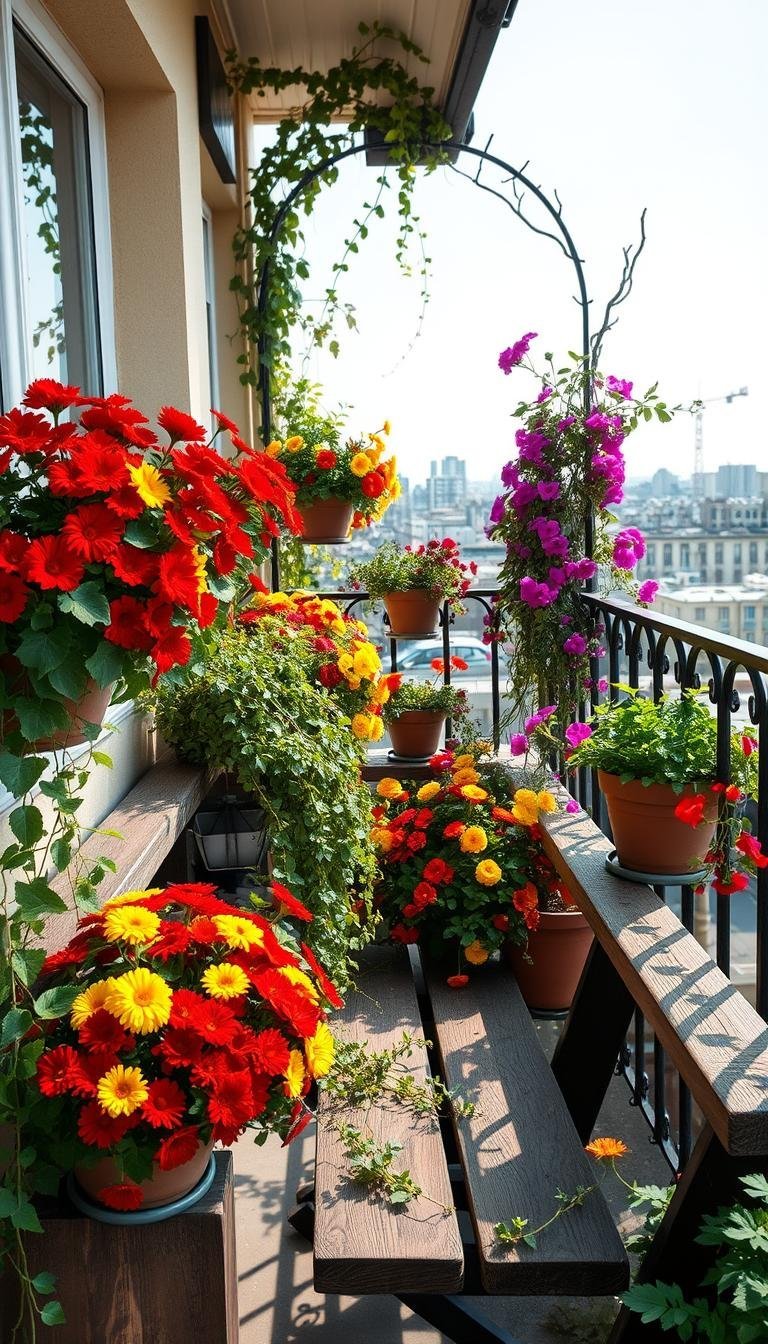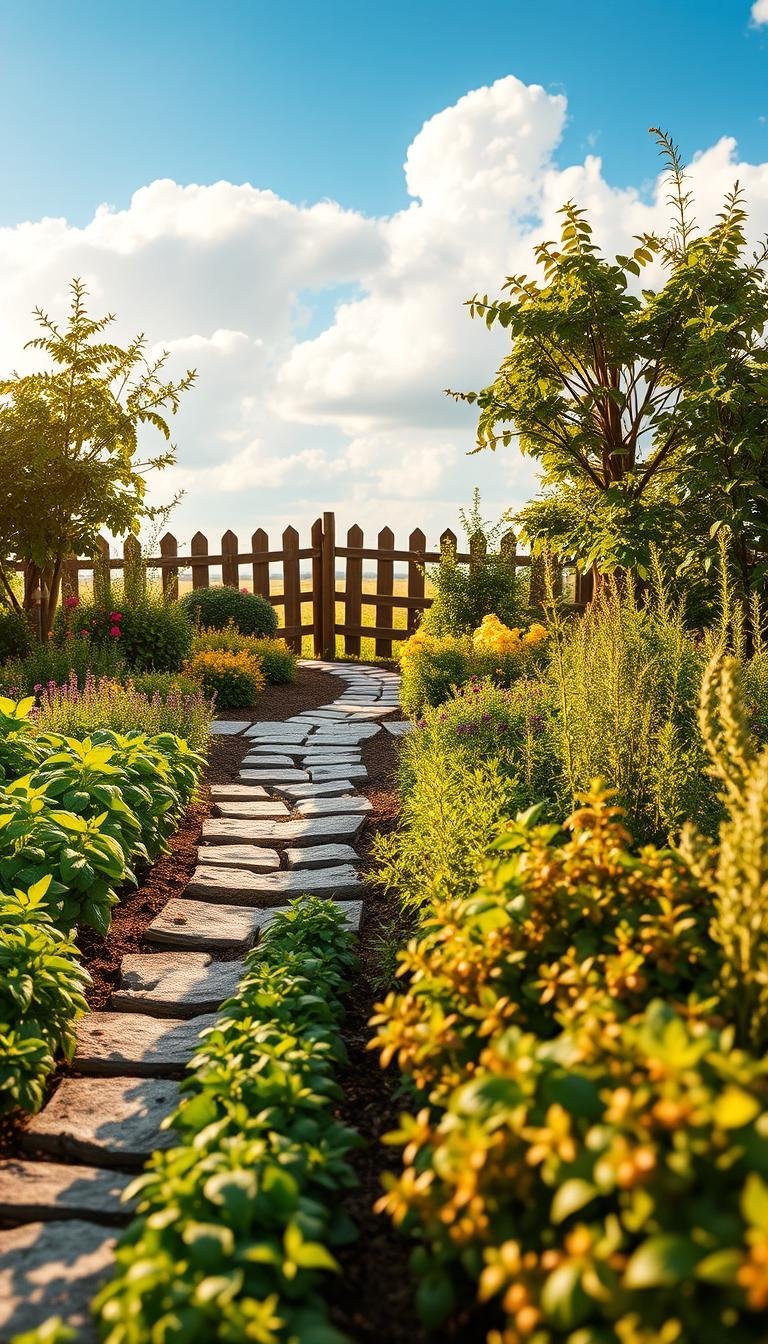This post may contain affiliate links. If you click and buy, we may earn a small commission at no extra cost to you. Learn more.
Gardening doesn’t have to be hard. Whether you have a small backyard or a balcony, we’ve got you covered. This guide shows you how to plan a veggie garden layout in simple steps. Follow along to learn how to design a thriving veggie garden.
Every successful garden starts with a plan. This article covers five key steps. You’ll learn about understanding your space, choosing the right tools, picking vegetables for your climate, organizing your grid, and rotating crops. You’ll see how to make even a small space productive.
Growing your own food saves money and boosts nutrition. By the end of this guide, you’ll know how to plan a veggie garden layout that fits your needs. Let’s start building your dream garden today!
Contents
- 1 Understanding Your Space for a Veggie Garden
- 2 Essential Tools for Planning Your Garden
- 3 Choosing the Right Veggies for Your Garden
- 4 Designing Your Garden Grid System
- 5 Planning for Crop Rotation
- 6 Watering Solutions for Your Garden
- 7 Pest Management Strategies
- 8 Adding Nutrients with Fertilization
- 9 Seasonal Maintenance Checklist
- 10 Harvesting Techniques and Timing
- 11 Sharing Your Garden Experience
Understanding Your Space for a Veggie Garden
Before you start designing your best garden layout for vegetables, take a good look at your backyard. A careful check ensures your backyard vegetable garden layout will do well. Here’s how to begin:
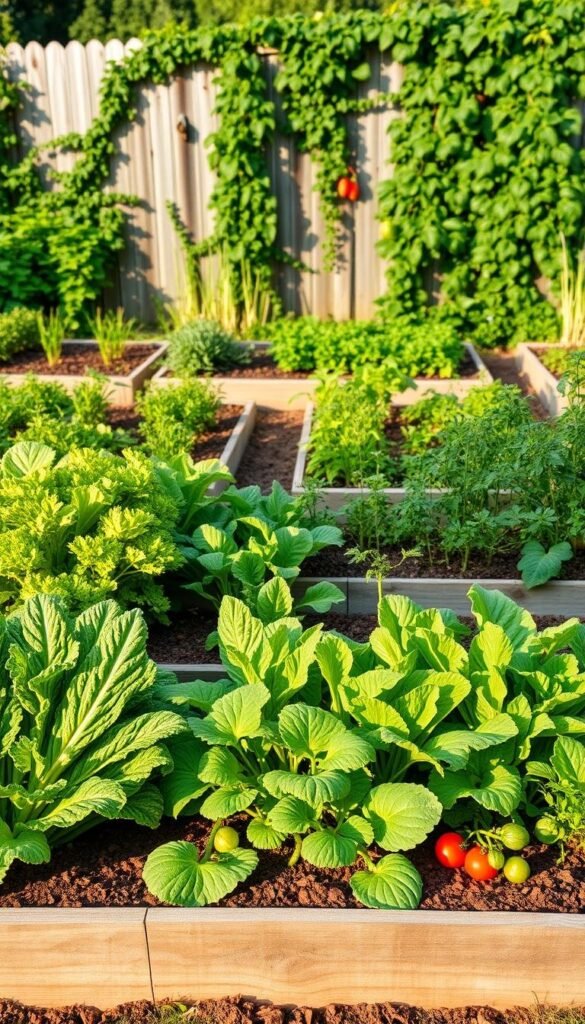
“A garden’s full promise is unlocked when you match plants with their environment.”
Evaluating Sunlight Exposure
Most vegetables need 6–8 hours of sunlight each day. Watch how sunlight moves across your yard. Note any shaded spots from trees or buildings. Use a notebook to mark the sunniest areas for planting.
Measuring Available Area
Use a tape measure and draw a map of your space. Include paths, fences, and any plants you already have. Graph paper helps you scale your design. A 10×10-foot area can fit tomatoes, herbs, and greens well.
Considering Soil Quality
Test your soil’s pH with a home kit. Most vegetables like a pH between 6.0–7.5. If your soil is clumpy, add compost. Raised beds can also help with poor soil, improving drainage and keeping nutrients.
Knowing your space turns a simple plot into a lush veggie garden. Every little detail, from sunlight to soil, is important. So, take your time to get it just right.
Essential Tools for Planning Your Garden
Every great veggie garden starts with the right tools. Whether you’re using a vegetable garden planting guide or exploring small vegetable garden layout ideas, these tools make it easier. Let’s look at what you need to plan your space well.
Basic Tools for Garden Layout
Begin with simple items like a measuring tape, stakes, and string. A retractable tape measure helps you space plants right. Use stakes and string to mark bed edges or paths. A notebook and pencil are great for jotting down ideas.
Technology Aids for Planning
Apps like Garden Plan Pro or Smart Gardener turn your phone into a planning tool. They suggest plant spacing and sunlight needs. Online tools like GrowVeg even create custom layouts.
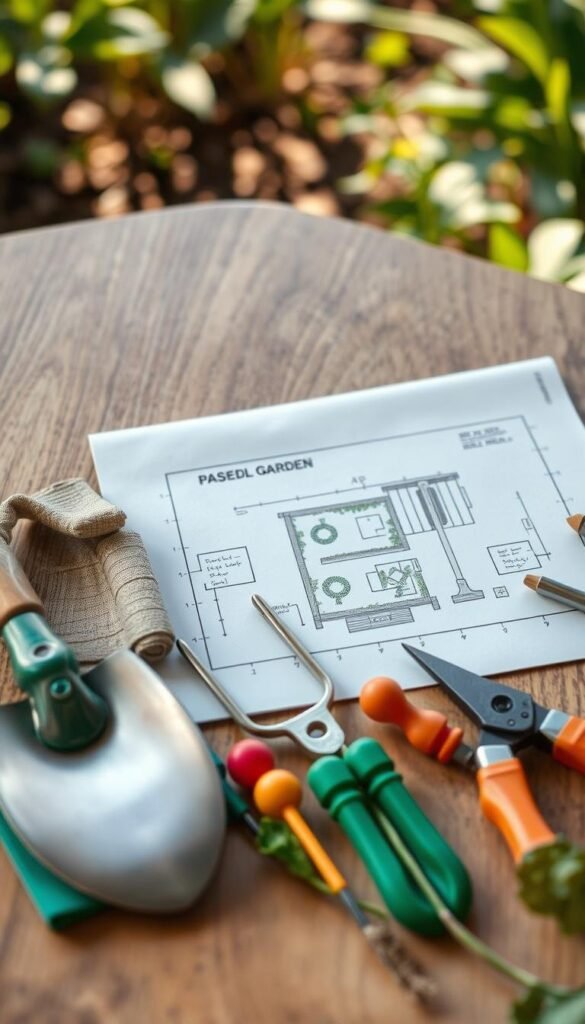
Drawing Tools for Design
Graph paper is great for sketching out beds and plant groups. Templates from vegetable garden planting guide books offer pre-made grids. For digital designs, try free software like SketchUp to see 3D layouts. Even a whiteboard is good for brainstorming small vegetable garden layout ideas with others.
“The right tools turn garden planning from a guess into a blueprint.” — Mel Bartholomew, author of Square Foot Gardening
Whether you prefer high-tech or old-school, these tools keep your plans organized. Mix and match until you find what works for you. Remember, even a rough sketch can greatly improve your garden’s success.
Choosing the Right Veggies for Your Garden
Every veggie garden layout thrives when plants match your climate and space. Start by mapping seasonal planting zones to pick vegetables that grow best in your area. A successful vegetable garden design balances practicality with personal taste—think classics like tomatoes and zucchini paired with space for surprises like rainbow chard.
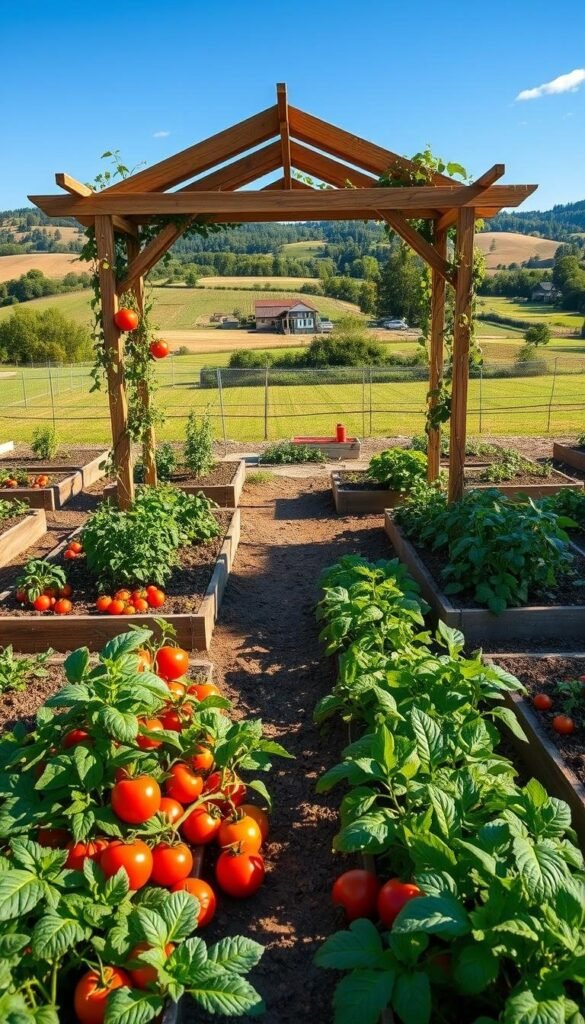
Seasonal Vegetables to Consider
- Spring: Peas, spinach, and radishes (USDA zones 3-8)
- Summer: Tomatoes, peppers, and cucumbers (zones 5-10)
- Fall: Broccoli, kale, and carrots (zones 4-9)
Check local extension services for zone-specific planting dates. Mix short-season crops like lettuce with slower growers like pumpkins for year-round harvests.
Space Requirements for Each Plant
Root vegetables like carrots need deep soil, while sprawling plants like squash demand wide spacing. Use vertical supports for climbers:
- Zucchini: 3-4 sq ft per plant
- Beans: Trellises save ground space
- Lettuce: Grows densely in 6-8″ spacing
Companion Planting for Success
Pair plants that support each other. Basil repels pests near tomatoes, while carrots and onions improve flavor when planted together. Avoid grouping plants with similar nutrient needs—like tomatoes and peppers—to prevent soil depletion.
“Companion planting is nature’s teamwork—your garden will thank you with fewer pests and bigger yields.”
Experiment with 1-2 new varieties each year. Blend reliable producers with fun options like purple potatoes. Adjust based on sunlight and soil from earlier steps to create a thriving garden that fits your lifestyle.
Designing Your Garden Grid System
Starting to optimize your garden space is all about the layout. We’ll explore ways to arrange plants for better growth. These tips will help you how to plan a vegetable garden layout efficiently, whether you have little space or want easier access.
Square Foot Gardening Explained
Divide your garden into 1-foot squares to make the most of small areas. Each square can hold plants like radishes or herbs. This way, you can fit 16 plants in a 4×4 grid. It’s perfect for raised beds, allowing for easy seasonal plant rotation without crowding.
Row vs. Raised Bed Design
Let’s look at the differences between rows and raised beds:
- Rows: Great for big yards, but paths between rows can waste soil. Best for tall plants like corn.
- Raised Beds: The raised bed vegetable garden layout reduces weeding and improves drainage. Beds 3–4 feet wide make it easy to reach plants from both sides.
Creating Accessible Pathways
Paths should be 18–24 inches wide for wheelbarrows. Use wood chips or gravel to keep feet dry. Place pathways every 4 feet for easy access without stepping on plants. Mark them with stones or pavers to keep the area clean.
Planning for Crop Rotation
Crop rotation is a simple yet powerful strategy to keep your organic vegetable garden layout thriving year after year. By moving plant families each season, you disrupt pest cycles and prevent soil nutrient depletion. This practice ensures your garden stays healthy without relying on harsh chemicals.
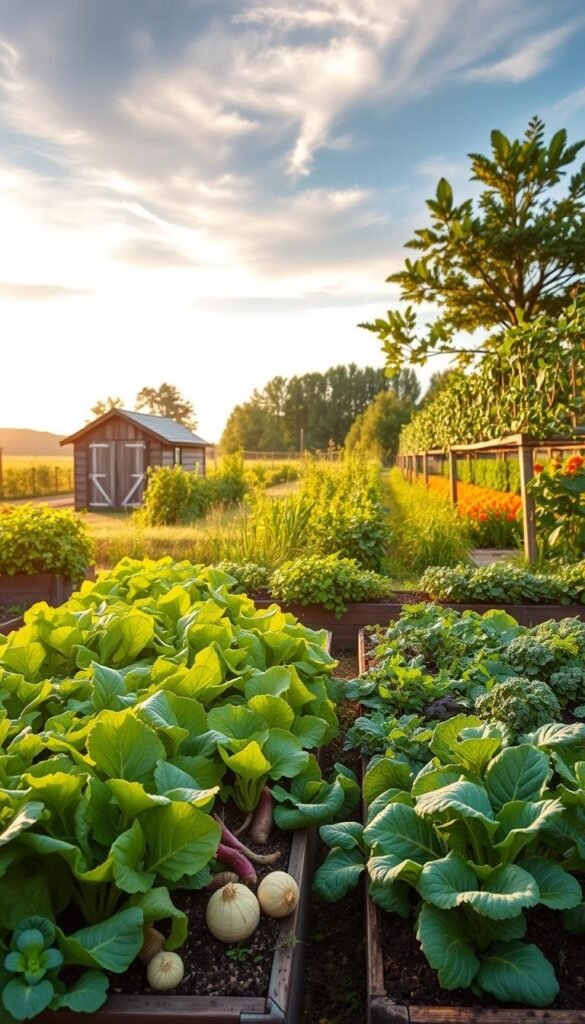
Benefits of Crop Rotation
- Reduces disease spread by interrupting pest life cycles
- Improves soil fertility naturally
- Boosts long-term plant productivity
How to Implement Rotation Plans
Start by dividing plants into four main groups: legumes, nightshades, brassicas, and root crops. Rotate these groups across garden beds annually. For small gardens, a 3-year rotation works well; larger plots may use 4-year systems. Use a notebook or app like Garden Planner Pro to track yearly changes.
Timing Your Planting for Success
A vegetable garden planting guide should include rotation in its seasonal plans. Follow this timeline:
- Spring: Plant peas or beans to add nitrogen
- Summer: Grow tomatoes and peppers in vacated spots
- Fall: Choose leafy greens where peppers grew
Pair rotation with a vegetable garden planting guide to time plantings so every bed rests between harvests. This method maximizes space while maintaining soil balance.
Watering Solutions for Your Garden
Proper watering is key to a thriving successful vegetable garden design. Whether you have a small plot or a large backyard vegetable garden layout, choosing the right methods ensures plants get the moisture they need without waste.
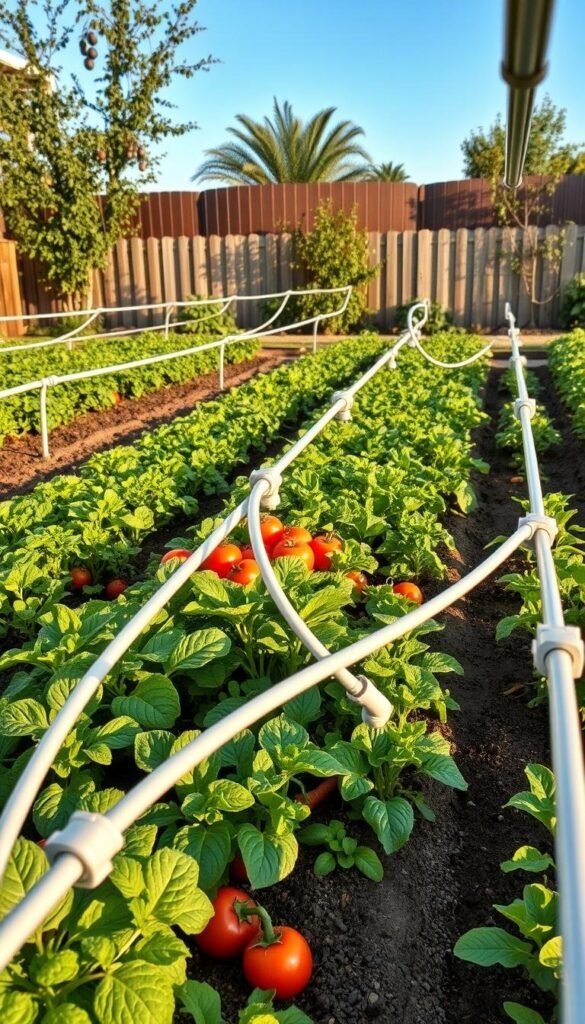
Effective Irrigation Systems
Choose systems that fit your garden’s needs. Drip irrigation delivers water directly to roots, reducing evaporation. Soaker hoses are great for raised beds, while oscillating sprinklers are best for wide open spaces. Add mulch to retain soil moisture and improve your garden’s structure.
Rainwater Harvesting Ideas
- Install rain barrels under downspouts to collect runoff.
- Position barrels near garden beds for easy access.
- Use overflow pipes to distribute water during heavy rains.
Integrate barrels into your backyard vegetable garden layout discreetly, like behind shrubs or along fences.
Best Practices for Regular Watering
Water early in the morning to minimize evaporation. Aim for deep, infrequent watering—soil should be moist 6 inches deep. Adjust based on weather: increase in heatwaves, reduce during rainy spells. Leafy greens like lettuce need consistent moisture, while tomatoes prefer drier soil between waterings.
Pair these tips with mulching to maintain soil health and support your successful vegetable garden design. Small adjustments in watering can make a big difference!
Pest Management Strategies
Your organic vegetable garden layout does best when pests are kept away without chemicals. Here are some tips to protect your plants using nature’s tools.

Natural Pest Control Methods
- Use row covers as physical barriers to block insects.
- Plant marigolds alongside tomatoes to deter nematodes.
- Make a spray with garlic, chili, and soap to repel aphids.
Choosing Pest-Resistant Varieties
Choose veggies that are bred to resist bugs. Try ‘Ironclad’ broccoli or ‘Jade Star’ beans. These varieties fit well in the best garden layout for vegetables. They are spaced to prevent pests from spreading.
Attracting Beneficial Insects
Add flowers like yarrow or clover to your garden borders. These attract ladybugs and lacewings, which eat pests. Tall sunflowers can also protect seedlings and host helpful predators.
By following these steps, you can make your garden self-sustaining. Healthy soil and smart spacing in your layout will naturally keep pests away.
Adding Nutrients with Fertilization
Every organic vegetable garden layout needs the right nutrients at the right time. Whether it’s a small plot or a big veggie garden layout, fertilization is key. It helps plants grow without using harmful chemicals. Let’s explore how to feed your garden for success.
Types of Organic Fertilizers
- Compost: Rich in microbes and slow-release nutrients
- Well-rotted manure: Ideal for nitrogen-hungry plants like tomatoes
- Bone meal: Provides phosphorus for root development
- Seaweed extract: Boosts potassium and trace minerals
Fertilization Schedules Explained
Timing is everything. Start with compost as a base before planting. Then, add manure every 6-8 weeks as plants grow. Use liquid kelp sprays every two weeks for leafy greens. Keep a calendar to stay on track with your organic vegetable garden layout plan.
Tailoring Nutrient Needs
See yellow leaves? That means plants need more nitrogen. Use a soil test kit to find out what’s missing. Leafy greens need nitrogen, while plants that produce fruit, like peppers, need more phosphorus. Change your fertilizer mix to meet each plant’s specific needs.
Seasonal Maintenance Checklist
A good vegetable garden planting guide makes seasonal tasks easy. Proper successful vegetable garden design lowers stress and increases yields. Here’s how to care for your garden by season.
Tasks for Spring Prep
Begin with these essential steps:
- Test and amend soil pH before planting.
- Follow your garden design map to space crops correctly.
- Inspect irrigation systems and repair leaks.
Summer Care Guidelines
Peak growth needs consistent attention:
- Water deeply early in the day to reduce evaporation.
- Mulch around plants to retain moisture and suppress weeds.
- Check for pests weekly and prune diseased leaves immediately.
Fall Clean-Up Essentials
Prepare for winter with these final steps:
- Rake and compost spent plants (avoid diseased debris).
- Sow cover crops like clover to enrich soil over winter.
- Sharpen tools and store them in a dry, safe location.
“Good design cuts work in the long run. Follow your layout to know exactly where to plant, water, and protect.” — Organic Gardening Institute
Follow this checklist to make seasonal chores simple. A well-thought-out successful vegetable garden design makes every step easier, from planting to harvest.
Harvesting Techniques and Timing
The moment you’ve waited for is here! Proper harvesting techniques and timing turn your garden efforts into fresh meals. A small vegetable garden layout that uses successful vegetable garden design principles ensures a steady harvest without overwhelming your kitchen at once.
“A well-timed harvest is like catching a wave—it requires patience and precision.” — Mark Thompson, Urban Farmer
Knowing When to Harvest
Watch for these cues:
- Leafy greens: Snip outer leaves when 4–6 inches tall.
- Tomatoes: Pick when fully colored and slightly soft to touch.
- Root veggies: Dig carrots when shoulders peek above soil; harvest potatoes after foliage yellows.
Best Practices for Harvesting
Protect plant health with these tips:
- Cut herbs just before dawn for maximum flavor.
- Use clean shears to avoid crushing stems.
- Leave lower leaves on plants to encourage new growth.
Storing Your Fresh Produce
Keep freshness longer with these methods:
Root cellars or cool basements work for carrots and beets. Freeze herbs in olive oil ice cubes or blanch and freeze beans. Canning is ideal for tomatoes. A successful vegetable garden design with staggered planting times ensures a steady supply, so storage isn’t a last-minute rush.
Sharing Your Garden Experience
When your garden flourishes, it’s time to share its story. Whether it’s a raised bed or a large backyard garden, connecting with others boosts your success. Here’s how to inspire others with your garden.
Engaging with Community Gardens
Local community gardens are great for teamwork and learning. By joining urban farms or horticultural societies, you can try new ideas. These groups offer advice for both beginners and experienced gardeners, perfect for those with small or shared spaces.
Benefits of Garden Tours and Workshops
Going on public garden tours or hosting open days brings new views. Seeing how others handle pests, space, and soil can inspire you. Workshops often cover topics like vertical gardening, adding valuable knowledge to your garden skills.
Documenting Your Journey Online
Posting photos or blog posts about your garden’s growth is rewarding. Sites like Pinterest or Instagram are great for showing your garden’s evolution. Writing about challenges, like preparing soil for raised beds, helps others avoid mistakes and join your gardening journey.
Gardening is a cycle of learning and sharing. As your garden evolves, so do the lessons it teaches. By connecting with others, you help build a community of gardeners who inspire and motivate each other. Your hard work today will guide next year’s harvest and more.
To bring you cozy inspiration more efficiently, we sometimes use AI to assist in content creation — but every word and idea is carefully shaped by our team. See our AI Disclosure for more info.




